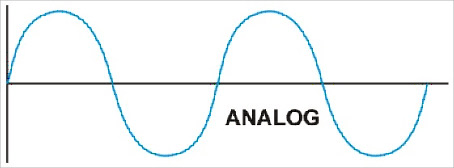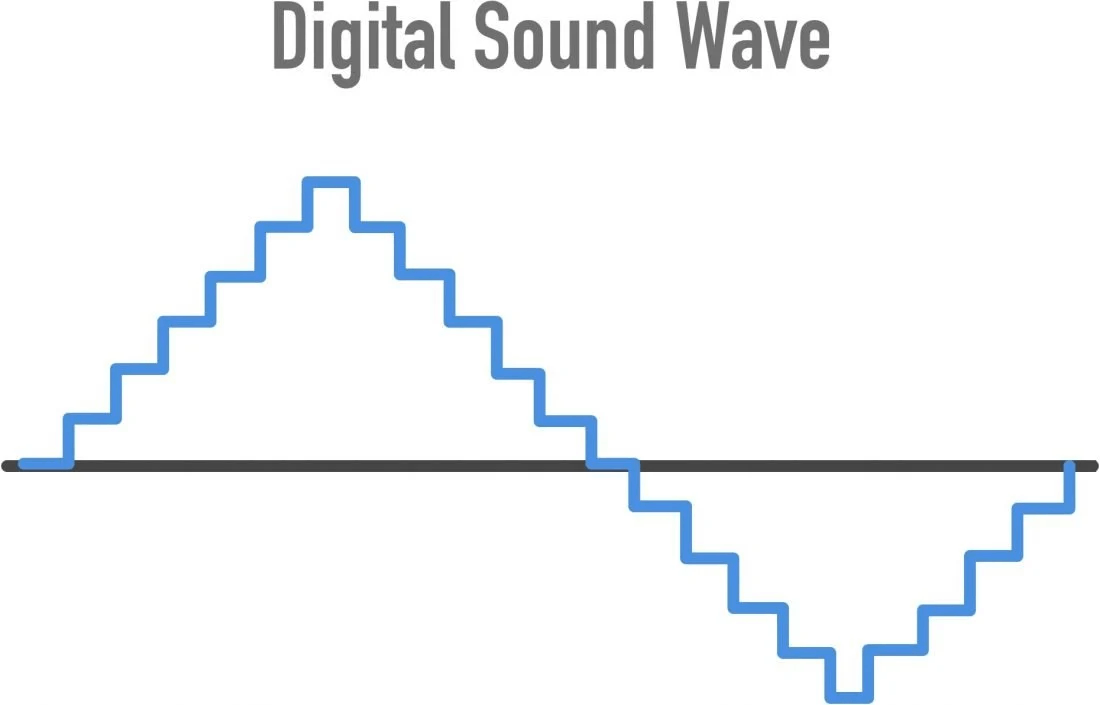Analog Circuits v/s Digital Circuits
Analog Circuit
An analogue circuit uses analogue signals, which include more data since they are continuous waves as opposed to the binary downs and ups of a digital waveform. The whole signal, or continuously varying signal, is used in analogue circuits (or pulses). Additionally, the term "analogue" refers to a proportional representation; the analogue circuit generates an electrical voltage or current that is proportional to the real-world signal.
The electromagnetic spectrum contains only analogue waves. Moreover, in an analogue world, we live.
Any analogue signal or piece of data may be processed by an analogue circuit, which then generates an analogue output. Resistors, inductors, capacitors, and other electronic components make up analogue circuits.
Analog signals are any signals that are a constant function of time. Because every signal in the actual world is an analogue signal, the analogue circuit does not need to convert the input signal; rather, the analogue input signal may be sent to the analogue circuit with no loss and can be processed immediately by the specific analogue circuit. Additionally, the analogue signal generated by the analogue circuit is also analogue.
Types of Analog Circuits
Analog circuits can be of two types: active circuits and passive circuits, depending on the behavior of the circuit and the components utilized. Low pass filters are example of passive analogue circuits, whereas amplifiers are instances of active analogue circuits.
The fundamental disadvantage of analogue circuits is that they are particularly vulnerable to noise, which can distort the waveform of the signal and result in information loss.
A continuous wave is how humans perceive sound and light; therefore, an analogue circuit creates an electrical depiction of our physical surroundings.
Once more, unlike a digital integrated circuit, which would transform the signal into binary pulses or another approximation of the real-world signal, analog waves are generally smooth, but digital waves are jagged, to put it another way.

Analogue circuitry doesn't really scale well, in contrast to digital circuitry. As a result, analogue trails digital in node downsizing. To maintain loads, power distribution, and signal integrity within an application, analogue transistors frequently need to be bigger.
Staying at older nodes, which reduces money and effort, is one perk of analogue. Analog engineers may continue to acquire expertise with older nodes as there is less pressure to make transistors smaller and migrate analogue to newer nodes.
Digital Circuit
An electrical circuit that handles digital signals is known as a digital circuit. Digital signals are defined as signals that are discrete functions of time.
Digital logic gates are the fundamental components of digital circuitry. Only digital signals may be processed by the digital circuit; however, analogue signals are used in real-world applications. Therefore, analog signals must be transformed into digital signals using a unique electrical device called an ADC (Analog to Digital Converter).
The analogue signal must be transformed back into the digital signal since the output of the electronic systems is likewise digital signals. During, the sampling process, there might be information loss in the digital circuit. The only type of circuit that digital devices may have is an active circuit, which means that a separate power source is needed to run the circuit.

Difference between Analog and Digital Circuits
Now let us see the Differences b/w Analog Circuits & Digital Circuits
Analog Circuit:
- Analog circuits are electrical devices that can only handle analogue signals.
- A continuous time signal or perhaps an analogue signal must be the input signal to an analogue circuit.
- Analog signals are produced as outputs by analogue circuitry.
- Analog signals are produced as output by analogue circuitry. The resistors, inductors, capacitors, and other circuit elements that make up analogue circuits.
- The analogue circuits have the ability to directly process the analogue signals found in nature. As a result, signal converters are not needed in analogue circuitry.
- In analogue circuits, waves are used to transfer the signals, either wirelessly or by wires.
- The output of analogue circuits may contain an observational inaccuracy.
- The waves that make up the information are stored in the analogue circuits.
- The logical processes cannot be carried out effectively by an analogue circuit.
- There are two types of analogue circuits: active circuits and passive circuits.
Digital Circuit:
- The term "digital circuit" refers to a circuit that can exclusively process digital signals.
- Discrete time signals or digital signals are the input to the digital circuit.
- A digital signal is the result of the digital circuit.
- Logic gates are the primary circuit elements of digital circuits.
- Although the signals in the actual world are analogue, digital circuits can only process signals in their digital form. As a result, analogue to digital converters (ADC) and digital to analogue converters are needed for digital circuits (DAC).
- Signals can only be carried across wires in the digital form in digital circuits.
- The output of the digital circuits is free of observational mistakes.
- Information is stored in binary form using digital circuitry.
- Logical processes are efficiently carried out by digital circuits.
- There is just one form of active circuit among the digital circuits.
Difference table between Analog and Digital Circuits
| Analog Circuits | Digital Circuits |
| Analog circuits are electrical devices that can only handle analogue signals. | The term "digital circuit" refers to a circuit that can exclusively process digital signals. |
| A continuous time signal or perhaps an analogue signal must be the input signal to an analogue circuit. | Discrete time signals or digital signals are the input to the digital circuit. |
| Analog signals are produced as outputs by analogue circuitry. | A digital signal is the result of the digital circuit. |
| Analog signals are produced as output by analogue circuitry. The resistors, inductors, capacitors, and other circuit elements that make up analogue circuits. | Logic gates are the primary circuit elements of digital circuits. |
| The analogue circuits have the ability to directly process the analogue signals found in nature. As a result, signal converters are not needed in analogue circuitry. | Although the signals in the actual world are analogue, digital circuits can only process signals in their digital form. As a result, analogue to digital converters (ADC) and digital to analogue converters are needed for digital circuits (DAC). |
| In analogue circuits, waves are used to transfer the signals, either wirelessly or by wires. | Signals can only be carried across wires in the digital form in digital circuits. |
| The output of analogue circuits may contain an observational inaccuracy. | The output of the digital circuits is free of observational mistakes. |
| The waves that make up the information are stored in the analogue circuits. | Information is stored in binary form using digital circuitry. |
| The logical processes cannot be carried out effectively by an analogue circuit. | Logical processes are efficiently carried out by digital circuits. |
| There are two types of analogue circuits: active circuits and passive circuits. | There is just one form of active circuit among the digital circuits. |
Conclusion
Electronic circuits may be divided into two primary categories: analogue and digital. An analogue circuit can only handle analogue signals, but a digital circuit could handle both analogue and digital signals. This is the main distinction between analogue and digital circuits.